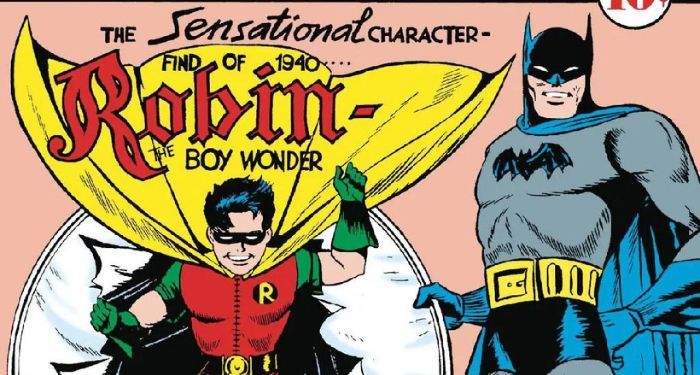
Tropes in Capes: Kid Sidekicks
Superhero comics have many well-worn motifs which have been popularized, subverted, and scoffed at over the decades, like secret identities, reporter girlfriends, and radioactive everything. In Tropes in Capes, I’ll look at the history of these elements: how they got started, when and if they fell out of favor, and where they are now. First up: the kid sidekick!
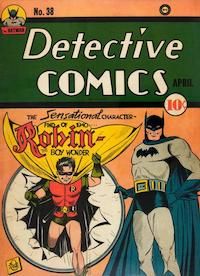
The first proper kid sidekick in superhero comics is not going to come as a surprise to anyone: it’s Robin, of course. Robin the Boy Wonder debuted in 1940, created by Bob Kane, Bill Finger, and Jerry Robinson. The cover of his first issue declares him “The Sensational Character Find of 1940!” and for once, the hype is not overblown: Robin coined and defined a crucial aspect of the genre almost overnight, and remains one of the most beloved superheroes in the world over 80 years later.
From the perspective of someone trying to sell comics in the 1940s, the kid sidekick makes a ton of sense. First of all, the hero needs someone to talk to — Sherlock Holmes has Watson, and now Batman would have Robin. (In fact, there’s a popular but unsourced quote by Bill Finger floating around the internet making this exact comparison.) Second, the hero needs a regular someone to rescue. Superman had Lois Lane, but Batman had an inconsistent love life, so why not give him a ward with a propensity for getting tied up?
But most importantly, the kid sidekick is a kid, and in the 1940s, so were almost all comic book readers. What could be cooler than living vicariously through Dick Grayson while he lived in a mansion and fought ne’er-do-wells and never ever had to go to bed when he didn’t want to? The dream!
Robin paved the way for a host of other Golden Age sidekicks. By the end of 1940, the original Human Torch had gained a sidekick, Toro. By 1941, sidekicks were already so de rigeur that some new superheroes were given one right off the (pun intended) bat: the first appearance of Captain America is also the first appearance of his sidekick Bucky, and ditto Green Arrow and Speedy, while Sandman’s makeover from a The Shadow-esque pulp vigilante to a spandex-clad superhero came complete with a new sidekick, Sandy the Golden Boy. The trope was even already being subverted, as with the Star-Spangled Kid and Stripesy, where the kid was the hero and the adult was the sidekick. Even Jimmy Olsen, absolutely a kid sidekick despite his (usual) lack of spandex, made the jump from the Superman radio show to the comics in 1941.
(I’d like to give a shoutout here to one of my favorite comic book names of all time: Sparky, the incredibly obscure sidekick to the Golden Age Blue Beetle, had the real name of “Sparkington J. Northrup.” Bring back Sparky! The people demand it!)
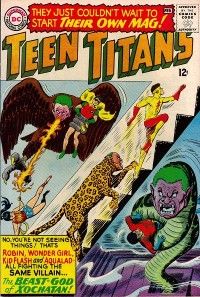
Most histories of the kid sidekick will pause here to note that Fredric Wertham, the psychologist whose crusade against comics helped pave the way for the Comics Code Authority, famously accused Batman and Robin of homoerotic subtext, describing their home life as “like a wish dream of two homosexuals living together” in his 1954 book Seduction of the Innocent, though he seemed more scandalized by things like Bruce wearing a dressing gown and owning vases than the potentially pedophilic implications of his argument. Though pop culture certainly eventually seized on this and ran with it — SNL’s Ambiguously Gay Duo is a famous example — I don’t think it’s fair to say that Wertham’s accusations had any affect on the sidekick trend specifically. Superheroes had already fallen out of favor by the late ’40s, let alone 1954, and so many sidekicks disappeared in the late ’40s and throughout the ’50s, not because they were viewed as questionable, but because their mentors weren’t being published either. Sandy the Golden Boy isn’t showing up when Sandman isn’t around you know?
Robin’s popularity certainly never flagged throughout the postwar years — and when the Silver Age dawned and superheroes became popular again, so did kid sidekicks. We got Kid Flash and Supergirl in 1959, Aqualad and Snapper Carr (sidekick to the whole Justice League!) in 1960, Bat-Girl in 1961, Aquagirl and Batgirl in 1967, and more. Jimmy Olsen got his own book in 1954 that remained one of DC’s bestsellers for years, and 1964 brought the first sidekick team, the Teen Titans, starring Robin, Kid Flash, and Aqualad (later to be joined by Wonder Girl, Speedy, and eventually many others). And of course, starting in 1966, TV viewers could see a sidekick in the form of Burt Ward’s Robin every week — same Bat-time, same Bat-channel.
But that was DC. Marvel took a different tack with their young heroes — rather than have a kid pal around with the main character, they made the main character a kid. Spider-Man was a teenager when he debuted; so were the original X-Men, and the Fantastic Four’s Human Torch. This is sometimes attributed to Stan Lee’s dislike of kid sidekicks, but given all the “he said/he said” from the Marvel bullpen over the decades, that’s now pretty apocryphal. Either way, it was a savvy move for courting teen readers over very young ones — would you rather imagine yourself as Robin, having to listen to Batman, or as Spider-Man, getting to wear pants? (Although…Robin has a trust fund. Just saying.)
And as comics readership aged over the next couple of decades, sidekicks fell further and further out of favor. In the 1970s Batman, Aquaman, and Green Arrow all had acrimonious fallings-out with their wards, who struck out on their own (read: appeared far less frequently after that). Teen Titans was canceled for a few years, briefly revived, and canceled again.
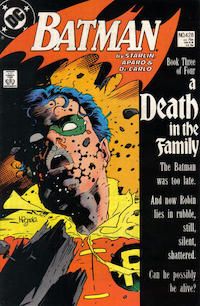
Then came the grim ‘n’ gritty ’80s, which were way too self-consciously cool for something as sweetly hokey as a kid sidekick. In 1986 The Dark Knight Returns, Frank Miller’s wildly popular and genre-redefining future dystopia, included the not-yet-canon death of then-Robin Jason Todd as part of its backstory. A couple years later, Jason was killed in canon, thanks to the results of a reader poll in which fans could dial into a 1-900 number to vote on whether or not he should live or die. The 1989 Batman movie had no Robin — a vast departure from the Adam West and Burt Ward days.
Jason Todd’s death could have been seen as the end of sidekicks in comics. After all, comics weren’t for kids anymore, according to ten thousand cliche headlines. What need was there for a character kids could relate to?
But that 1-900 vote was close — only a difference of 72 votes out of a total of over 10,000 — and even at the time, many readers and creators voiced their displeasure. (Frank Miller called it “probably the ugliest thing I’ve seen in comics, and the most cynical,” which is hilarious considering that it was your idea, Frank.) And by the end of 1989, we already had a new Robin: Tim Drake.
Once again, Robin set the tone. The ’90s brought a new wave of kid sidekicks — Superboy, Impulse, a new Wonder Girl, a new Batgirl — as well as a host of new teen heroes in general, like Spoiler, Damage, and a new Star-Spangled Kid. Teen heroes were popular at Marvel and indie publishers too, notably Static and Rocket over at Milestone. It’s worth noting that comics were enjoying another high point here, during the speculator bubble of the early to mid-’90s.
That bubble eventually burst, and the bleak post-9/11 years took their toll on sidekicks — DC killed off Superboy, Kid Flash, and Spoiler, among others, and the most famously dead sidekicks in comics history, Jason Todd and Bucky Barnes, came back as profoundly traumatized villains, not to mention object lessons about the dangers of taking a child into the field. Once again, it seemed like the days of sidekicks might be over.
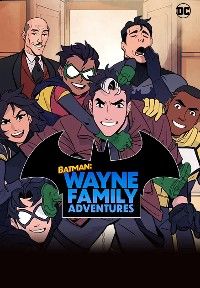
And yet the mid-2010s saw yet another flourishing of sidekicks, teen heroes, and legacy heroes, many of whom quickly became massively popular. Ms. Marvel, Kamala Khan, is probably the poster child for this era, and no, she’s not a sidekick — she operates independently and certainly doesn’t live with or report to Captain Marvel. But she provides the same entry point for young readers that Robin did way back in 1940, and the same buoyant, hopeful energy. Meanwhile, DC’s Young Justice — a show about sidekicks — is hugely popular, and their officially licensed Webtoon, Wayne Family Adventures — about a family of sidekicks — has over a million subscribers, a number that dwarfs sales of Batman’s monthly comics.
The death of kid sidekicks as a trope has been frequently predicted, but it never actually seems to stick. And I don’t think it’s a coincidence that sidekicks flourish in boom times for comics — the Golden Age, the Silver Age, the ’90s speculator boom, and now, when there’s a superhero movie in every theater and a superhero show on every channel and streaming service. When the superhero genre is healthy, so are kid sidekicks. Not bad for a gaggle of plucky orphans with a propensity for getting kidnapped and making terrible puns!
Who’s your favorite kid sidekick of all time? Let us know on social media!
(It’s Sparky. The answer is Sparky.)
















